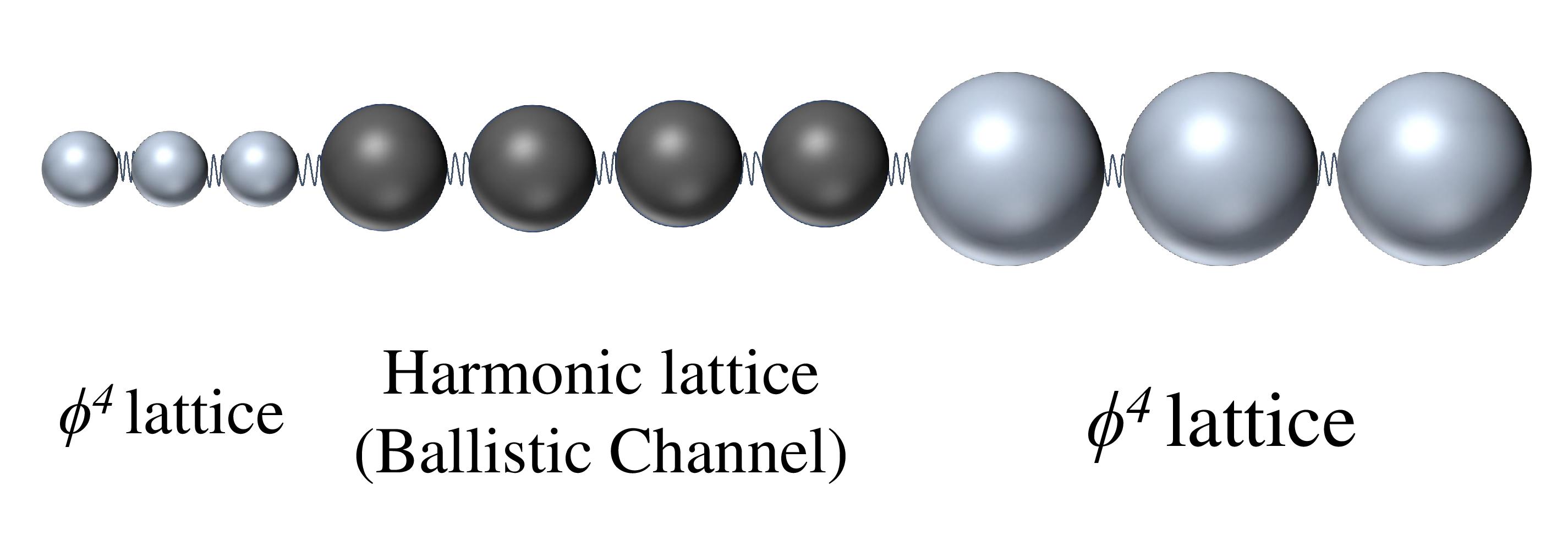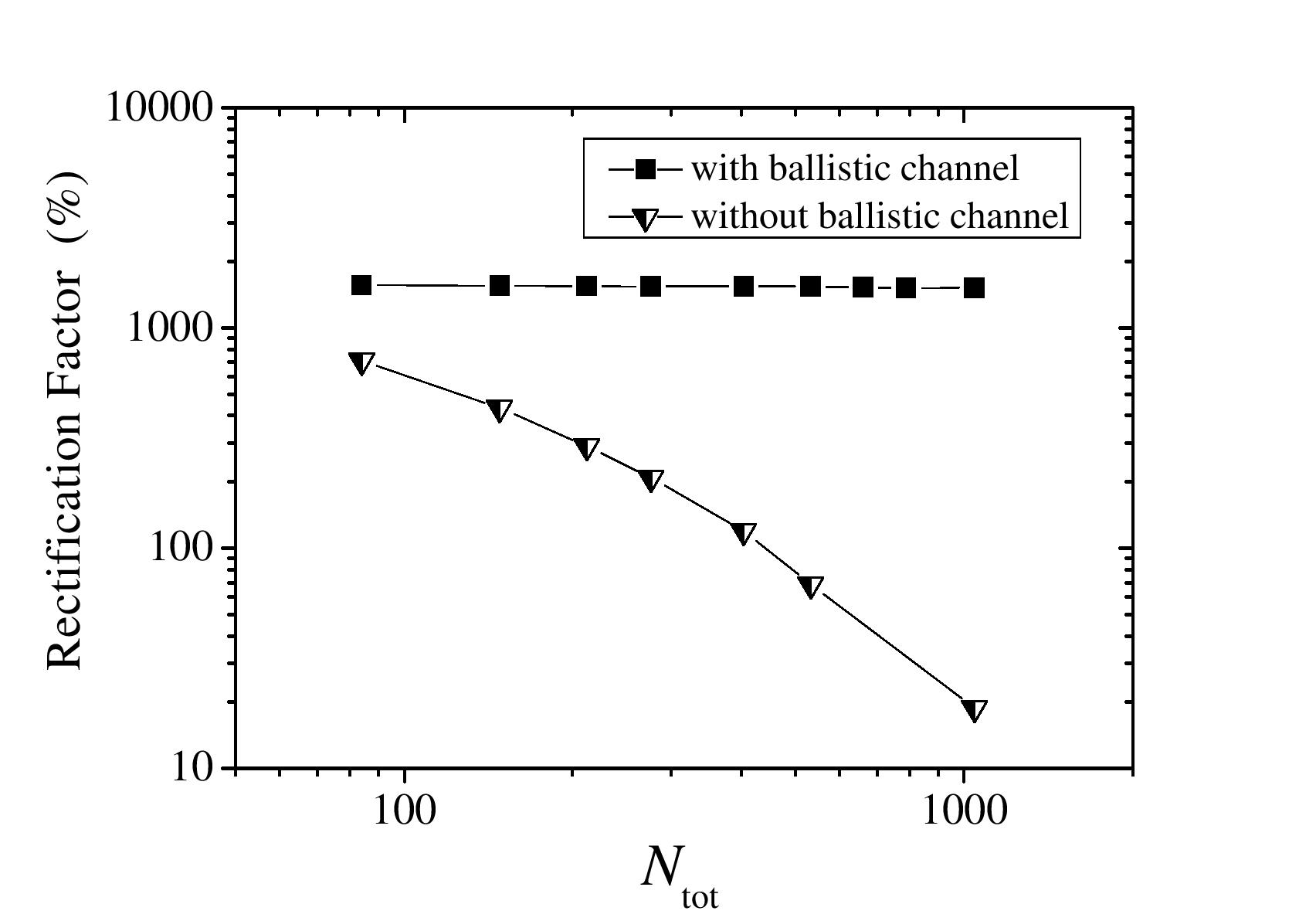Thermal rectifiers
Heat is a
ubiquitous form of energy, of which we have limited control.
Waste heat limits the performance of the smallest chips
present in electronic devices, such as laptop computers and
cellular phones. Energy supply and cooling is also a challenge
for the large data centers and supercomputers. Therefore,
efficiently harnessing thermal energy would have an enormous
societal impact.Effective control of heat currents requires
the development of a new class of nanoscale thermal devices,
namely thermal rectifier and amplifiers, analogous to
electronic diodes and transistors. Nonlinear dynamics
indicates possible pathways toward thermal diodes and
transistors, for a review paper, see G.
Benenti, G. Casati, C. Mejia-Monasterio and M. Peyrard, From
thermal rectifiers to thermoelectric devices, preprint
arXiv:1512.06889 [cond-mat.stat-mech], in Springer Lecture
Notes in Physics vol. 921 Thermal transport in low
dimensions: from statistical physics to nanoscale heat
transfer, edited by S. Lepri (2016).
Thermal
diode with a ballistic spacer
Model of a thermal diode with a ballistic spacer
A
general and yet unsolved problem of thermal
rectifiers is that rectification rapidly decays
to zero as the size increases. This effect is at
first sightunavoidable since, for a given
temperature bias, the temperature
gradientdecreases as the system size increases.
Consequently, the linear response regime where
rectification vanishes should be approached.
From a practical viewpoint, it would be highly
desirable to overcome this problem, since it is
difficult to apply large temperature biases on
small sizes. We have shown [1] that a
mass-graded system, with two diffusive leads
separated by a ballistic spacer, can exhibit
large thermal rectification effect, with the
rectification factor independent of system size.
The underlying mechanism is explained in terms
of the effective size-independent thermal
gradient and the match/mismatch of the phonon
bands. We also show the robustness of the
thermal diode upon variation of the model's
parameters. Our finding suggests a promising way
for designing realistic efficient thermal
diodes.




Model of a thermal diode with a ballistic spacer
References
[1] S. Chen, D. Donadio, G. Benenti and G. Casati, An efficient thermal diode with ballistic spacer, Phys. Rev. E 97, 030101(R) (2018).
[1] S. Chen, D. Donadio, G. Benenti and G. Casati, An efficient thermal diode with ballistic spacer, Phys. Rev. E 97, 030101(R) (2018).